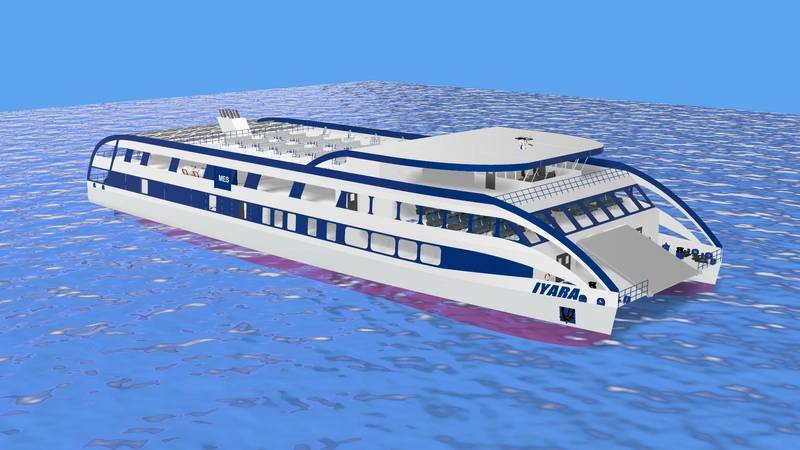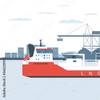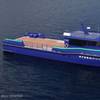Safe and Affordable: WFSA Picks Best Ferry Designs
The Worldwide Ferry Safety Association (WFSA) has announced the winners of the 8th Annual International Student Design Competition for a Safe, Affordable Ferry.
Dr. Roberta Weisbrod, WFSA’s Executive Director, said: “This year, the students were tasked with designing a RoPax ferry to carry around 300 passengers, many of whom prefer the use of outdoor hammocks, plus vehicles and cargo on the Amazon River between Manaus and Tefé on
a trip that is to last 20 hours. Because of the continuing spread of Covid 19 in Brazil and its transmission via river transport, student teams were asked to include features to prevent viral transmission. ”
Twelve teams from academic institutions in South America (1), North America (3), Europe (2), and Asia (6) submitted their designs.
The judges decided the First Place ($5,000) would go to the team from Bremen Hochschule; the Second Place ($3,000) to the team from ITS Surabaya; Third Place ($1,000) to the team from the Bangladesh University of Engineering Technology; and the Special Award for Addressing Covid ($750) to UAE Manaus.
First Place: Hochschule Bremen, City University of Applied Science.
The team from Bremen, Germany is led by Sonja Winzler, with teammates Michael Janssen, Bernadette Knauer, Florian Kokert, Peter Partheil, and Mats Steinschulte. The faculty advisor is Gregor Schellenberger.
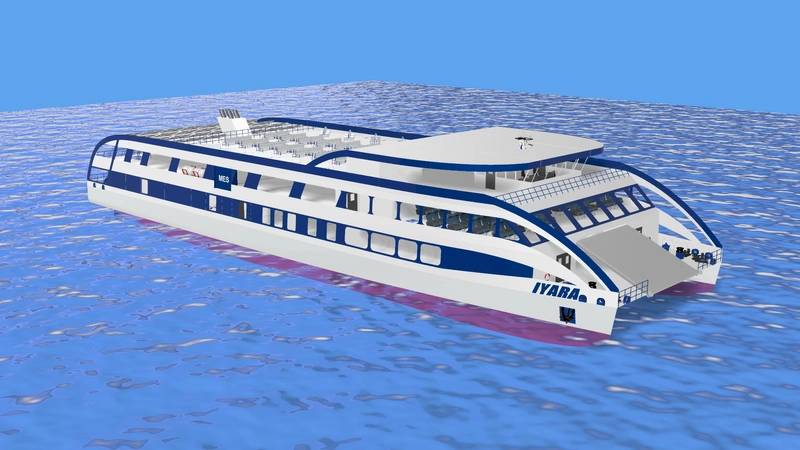 Credit: Worldwide Ferry Safety Association
Credit: Worldwide Ferry Safety Association
"The judges thought that the team did a great job of putting together a design that was thoughtful and responsive to the terms of reference and with a high propensity for implementation. The 60m catamaran vessel features an airbag innovation for additional
buoyancy in case of damage and a state-of-the-art navigation system. The very well-organized vessel design and report feature detailed manufacturing and operating costs with local shipyard data. There was a good fire safety concept and fast evacuation procedure.
The vessel was designed with an appreciation of the currents and the wind and weather conditions. Covid transmission prevention features include ventilation in enclosed spaces with HEPA filters
Second Place: Institute Sepuluh Nopember Institute of Technology in Surabaya, jointly with
Hochschule Wismar.
Team was led by Yohanes Pangestu Timur with teammates Kevin Rizqui Habib, Augal Nanda Oktoba, Imam Anthony Muslim, and Bima Surya Wicaksana. The faculty advisors are Ir. Agoes Santoso and Dr. Achmad Baidowi.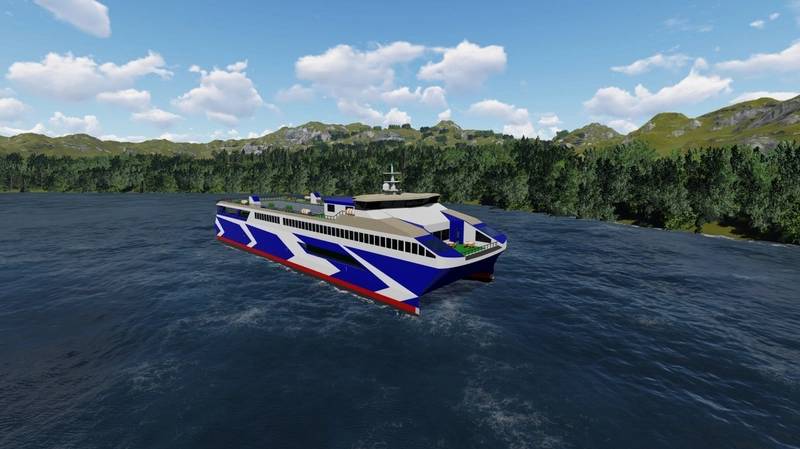 Credit: Worldwide Ferry Safety Association
Credit: Worldwide Ferry Safety Association
WFSA said: "The aluminum alloy catamaran is designed to produce very low wake, uses biodiesel fuel in a hybrid propulsion system, is equipped with solar panels, and has a unique hull shape.
The vessel has a turntable for vehicle loading and has convertible decks could be modified to accommodate operations during a disease outbreak. The report was well laid out in terms of machinery and power balance."
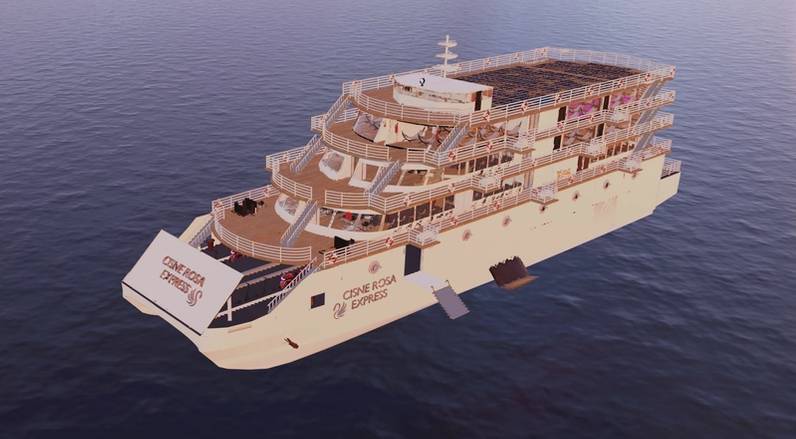 Credit: Worldwide Ferry Safety Association
Credit: Worldwide Ferry Safety Association
Third place: Bangladesh University of Engineering and Technology (BUET) jointly with Bangabandhu Sheikh Mujibur Rahman Maritime University, Dhaka
The team is led by Rounak Saha Niloy with teammates Parama Roy Chowdhury, Mohammad Abrar Uddin, and Md. Shariful Islam (Bangabandhu Sheikh Mujibur Rahman Maritime University). Faculty advisors are Dr. Zobair Ibn Awal and Dr. Mohammed Abdul Hannan (Newcastle – Singapore).
WFSA said: "The catamaran hull was composed of steel with aluminum superstructure for weight reduction and had an aerodynamic design. The vessel uses marine LIDAR to detect riverbed shallowing & debris, key Amazon River issues. Other features include solar panels and rainwater harvesting; and electric mosquito repellent and AIS."
Pandemic response Award: Universidade do Estado do Amazonas (UEA) Manaus, collaborating with Universidade Federal do Pará (UFP) and Universidade Federal do Rio de Janeiro (UFRJ) received the Special Award for Addressing Covid.
"With respect to covid transmission protection, the team established distancing for seating and hammocks, PVC dividers, disinfection areas. The air conditioners will recirculate air that is treated by UVC light that has an antimicrobial action and is produced by LED technology, with emission in the 275 mm (UVC) range, which does not use environmentally harmful heavy metals, such as traditional mercury lamps. It has a long service life, is easy to install and maintain. One of the main reasons for travel in this route is for medical care.
"The vessel has space that can be used as a ward and could be used for possible patient transportation during the COVID‐19 pandemic. Another feature was the dual use of LNG and diesel with the LNG fueling stations identified in the plan. The solar voltaic system thoughtfully would be provided with circulating cool water to maintain the efficiency of solar panels," WFSA explained.
The team is led by Kleyphide Pereira da Silva – UEA, with teammates Andrey Felipe Lima e Lima – UFPA, Brendo Xavier Lima – UEA, Lauro Benicio Gambizs Brizidio – UEA, Leandra Karolina Batista Leal – UEA, Rodrigo Pereira Guerreiro – UFPA, Vinícius Soares Bechman ‐ UEA. Faculty advisors are Marina Aranha de Sousa UAE, Ariel Victor do Nascimento UFP, André Vinícius Da Costa Araújo, UFP, Luiz Antônio Vaz Pinto, UFRJ, Ulisses Admar Barbosa Vicente Monteiro, UFRJ, and Ricardo Homero Ramírez Gutiérrez, UFRJ






